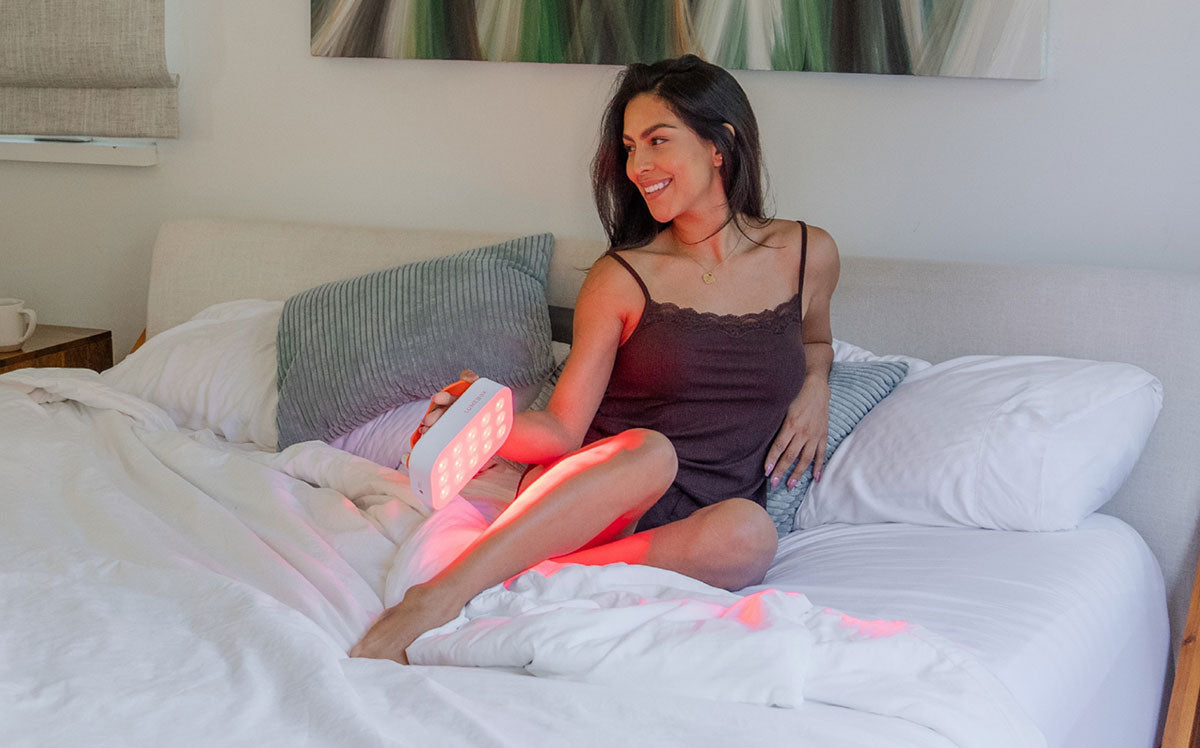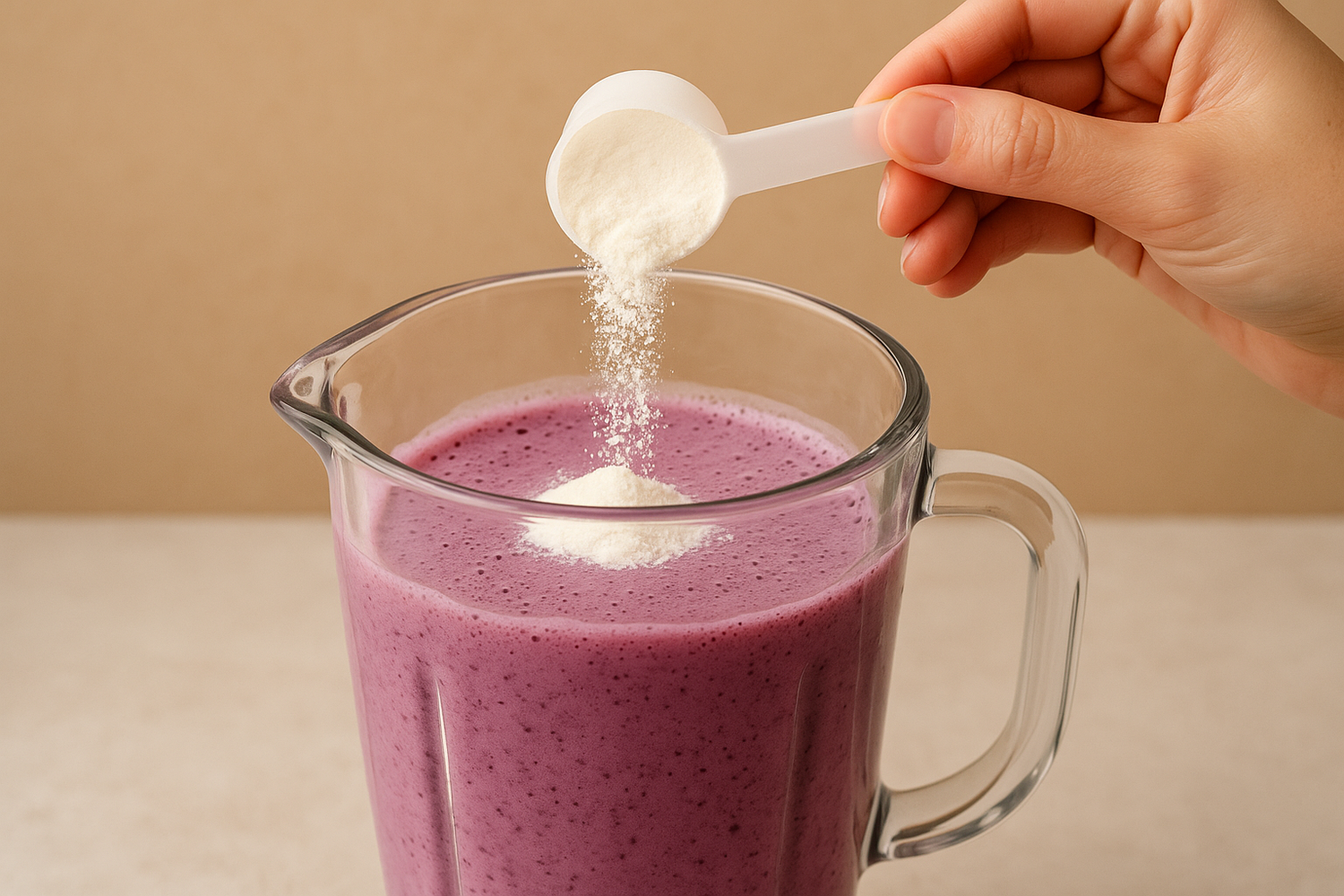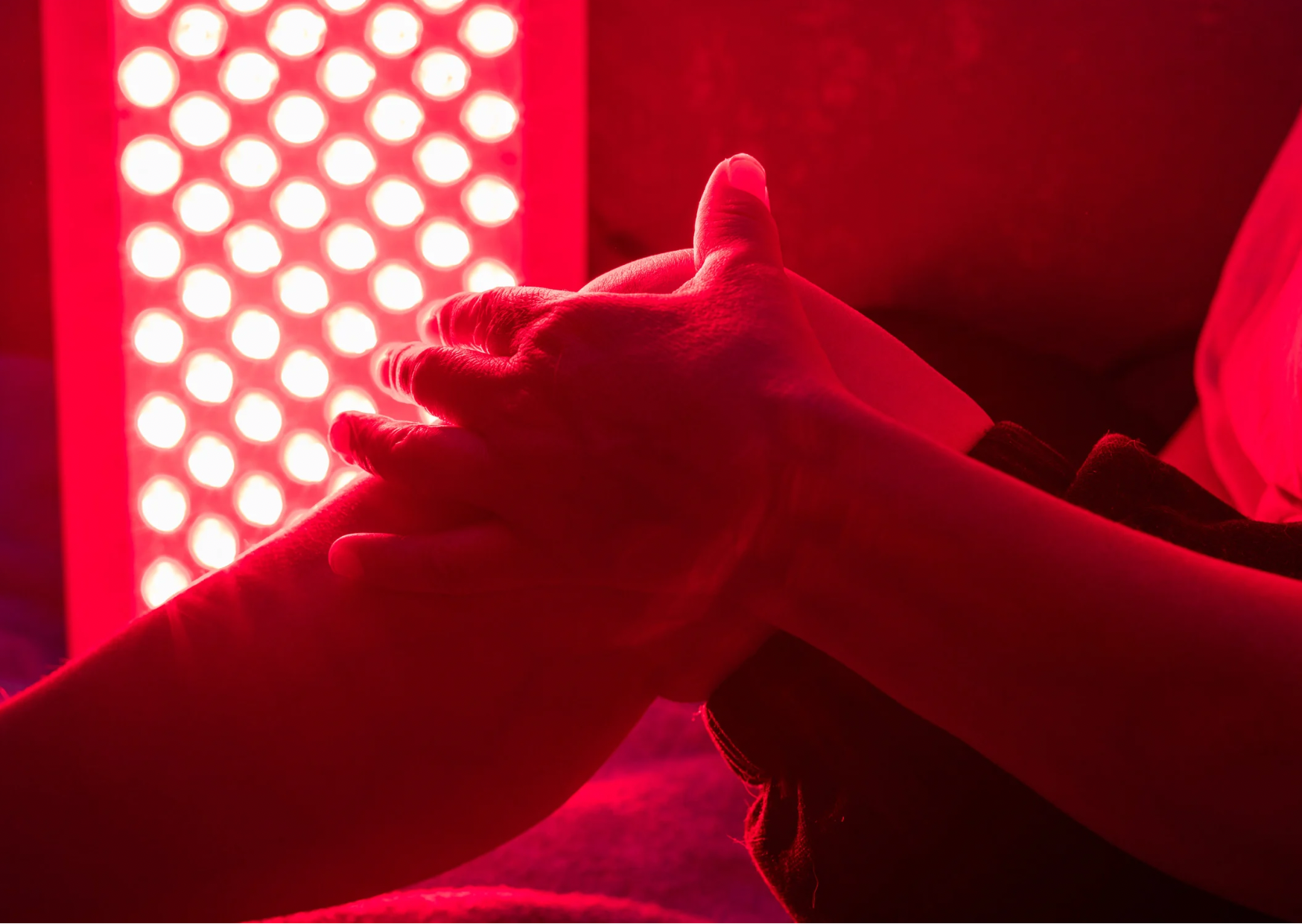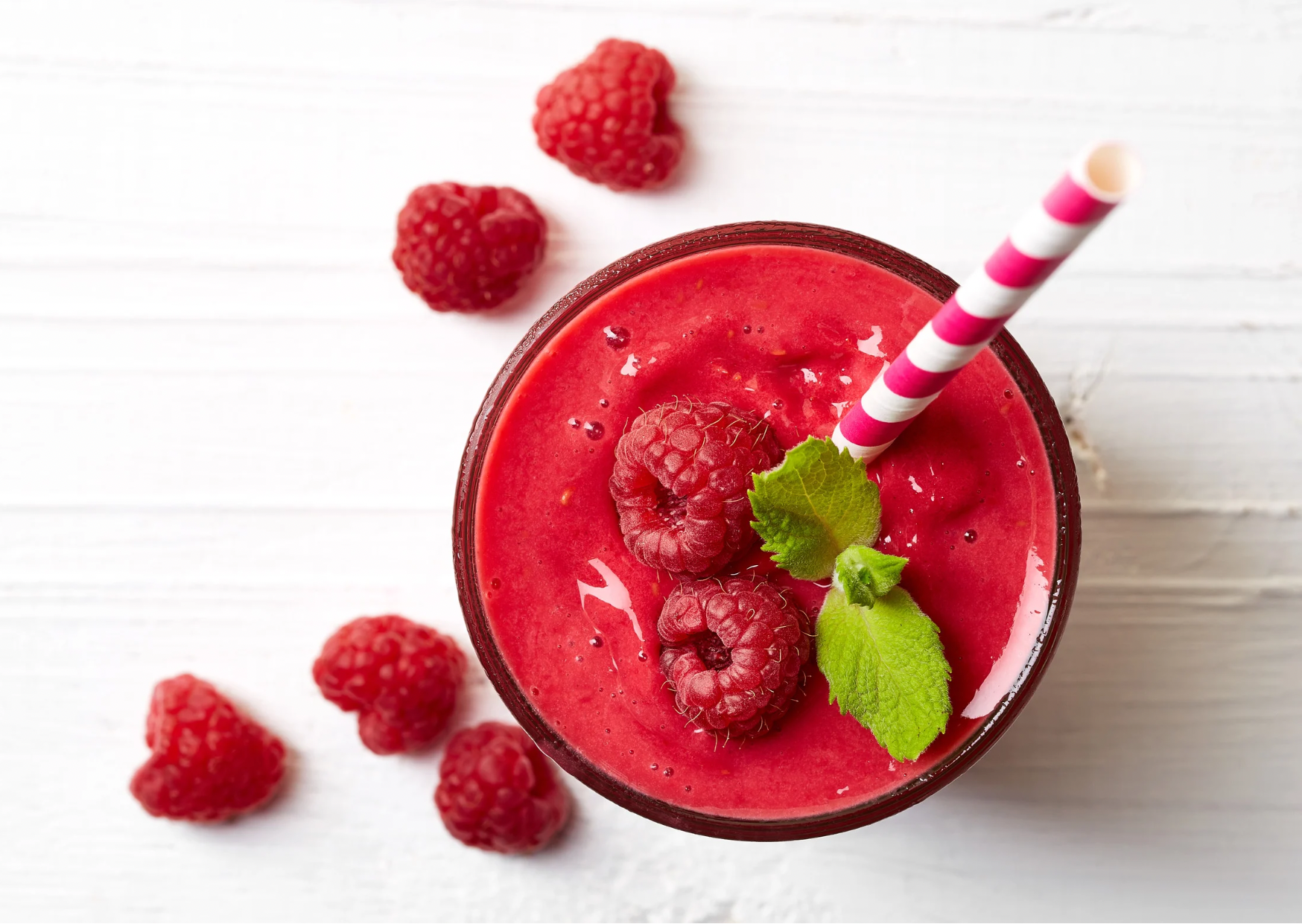Creatine for Women’s Health
Let’s be real: creatine’s reputation hasn’t done us any favors. For years, it was marketed to gym bros—so it’s no surprise many women are skeptical.
Fast-forward to 2025, and creatine is everywhere—filling our feeds, appearing in podcasts, and even being stirred into my morning coffee.
So why the hype? Because the science keeps growing, with solid evidence now linking creatine to benefits from muscle strength to brain health.
But you might’ve heard the concerns—maybe from a controversial influencer or a glossy magazine headline:
Creatine makes you bloat.
It’ll bulk you up.
Creatine causes hair loss.
We’re breaking down what science actually says.
And here’s something many people don’t realize: creatine and red light therapy actually work on the same energy system—ATP—and might just be a powerhouse combo for performance, recovery, and graceful aging.
What Is Creatine?
Creatine is a naturally occurring compound found in small amounts in animal-based foods like meat and fish. It’s also made in the liver and kidneys, then stored primarily in our muscles as phosphocreatine—a quick energy reserve your body uses during short bursts of activity, like lifting or sprinting.
Its main job? Rapidly replenishing ATP—your cells’ energy currency—during periods of high demand, like strength training or intense movement.
But that’s not all. Organs like the brain, heart, and reproductive tissues also rely heavily on ATP, which is why creatine is now being studied for benefits beyond muscle growth.
Why Should I Take Creatine?
Here’s a look at the full-body benefits of creatine, backed by published studies.
1. Muscle Strength & Mass
- Creatine is best known for its ability to support strength, power, and lean body mass in women—especially when combined with resistance training. [1]
- Creatine may help prevent sarcopenia (age-related muscle loss) and support muscle strength—especially when combined with resistance training. [2,3]
Why does that matter? Because more muscle means better blood sugar control, metabolic health, brain health, and a lower risk of frailty as our bodies change.
2. Bone Health
Creatine may help maintain bone density when combined with resistance training. [4]
(But don’t expect results from creatine alone—exercise is key!)
3. Brain Function
- Creatine may support memory, mood, and cognitive clarity by increasing brain energy levels [5]—especially during times of high demand like stress or sleep deprivation.
- In one study, a single dose of 0.35g/kg body weight after sleep deprivation improved cognitive performance. [6]
There’s a bunch of other research out there too—most of it still in the early stages, so we can’t draw firm conclusions yet. Here’s a snapshot:
- Knee Osteoarthritis [7] – when combined with resistance training.
- Fertility [8] – early evidence suggests benefits in both men and women, though safety in pregnancy hasn't been confirmed.
- Cardiovascular Health [9] – One study showed improvements in arterial stiffness and reduced artery buildup in older men.
- Mood Support [10] – Preclinical and clinical studies suggest creatine may support the effects of traditional depression treatments. (This isn’t a substitute for medication, however, it could help antidepressants work better. Always speak with your doctor before making any changes.)
Synergistic Benefits of Creatine + Red Light Therapy
Creatine and RLT both supercharge your energy systems—just in different ways.
It all starts with ATP—your body’s main source of cellular energy.
Creatine helps replenish ATP, which powers everything from muscle contractions and brain function to digestion and repair. It's not just for workouts—it fuels nearly every cell in your body, all day long.
Red and near-infrared light also help generate ATP, but through a different mechanism. At specific wavelengths, they activate an enzyme in the mitochondria called cytochrome c oxidase, which helps our cells ramp up ATP generation.
Creatine and red light could be a match made in mitochondrial heaven.
If you’re already using red light therapy (like LUMEBOX), creatine might be the easiest, safest upgrade to feel stronger, clearer, and more energized—inside and out.
Explore red light therapy benefits that pair perfectly with creatine →
- Muscle performance and recovery
- Cognition and healthy mood
- Bone and joint health
- Mitochondrial health
Debunking Common Myths: Creatine for Women
Sometimes the loudest voices are the most misleading. We hear things like “creatine causes hair loss” or “it’ll make you bulky,” and it’s enough to steer us away without giving it a second thought. So does science tell a different story?
Myth #1: Creatine causes hair loss
This myth stems from a single study [11] on rugby players who took creatine for 3 weeks and showed a small increase in DHT—a hormone linked to hair loss—but levels remained within the normal range. More importantly, the study didn’t even measure hair loss. The idea that creatine causes shedding came from assumptions, not actual evidence. It’s a perfect example of how research can get taken out of context.
Myth #2: Creatine makes you gain weight
Creatine can cause a temporary 2–5 lb weight increase, but it’s due to water being pulled into your muscles, not under your skin. [12,13] Creatine helps hydrate muscles and may make you look more toned, not bloated.
This type of water retention often settles over time, especially if you skip the high-dose “loading” phase (we touch on this below).
In women, research suggests that creatine alone doesn’t lead to significant weight or bulk [14]. When combined with resistance training, it may improve strength [15] and fatigue resistance [16]—but gains in muscle mass or changes in body composition tend to be minimal compared to men [17,18].
Myth #3: Creatine harms your kidneys
Long-term studies [19,20] have shown that creatine is safe for healthy adults at standard doses (3–5g/day). Slight increases in creatinine levels can happen, but that’s more about muscle metabolism, not kidney damage.
Bottom line: For healthy women, creatine is one of the most well-studied, safest supplements out there.
How to Supplement with Creatine
How much do I take?
Optimal dosages for women haven’t been clearly defined yet, but…
In studies, the most common (and well-studied) dose is 3–5 g/day of creatine monohydrate, shown to be safe and effective across a wide range of ages and activity levels. [21,22,23]
This steady daily dose builds up your muscle stores over time, typically reaching full saturation in about 3–4 weeks.
Some high-performance athletes use a loading phase (around 20 g/day split over 5–7 days) to reach saturation more quickly. However, this isn’t necessary for most people. At that high dose, you’re more likely to experience side effects. If you’re considering that approach, it’s best to check in with a healthcare or fitness professional first.
When do I take it?
You can take creatine 1.5–2 hours before exercise for peak blood levels during your workout, and taking it with carbs may enhance uptake into muscle [24]—but timing isn’t essential. What matters most is consistency. Think of it like watering a plant—it doesn’t really matter what time of day you do it, as long as you’re doing it on a regular basis.

What to Look For When Buying Creatine
Type: Creatine monohydrate is the gold standard. It’s the most studied, effective, and affordable form on the market. Avoid fancy “buffered” [25] or “ethyl ester” [26] versions; they’re often just marketing fluff.
Purity: Look for third-party tested products that are free from contaminants like heavy metals.
Additives: Skip unnecessary flavors or fillers. However, not all additives are bad—D-ribose and taurine, for example, support ATP production and can be especially helpful in plant-based diets where taurine is lower.
Who Should Take Creatine—and Why It Matters for Women at Every Stage
You’ve probably realized by now that creatine isn’t just for bodybuilders. If you’re active, looking to support muscle, brain, and mitochondrial health, or simply want to feel strong and well in your body, it’s a smart, low-risk supplement backed by decades of research.
What many people miss: creatine levels naturally decline with age, just like mitochondrial function. That’s why pairing creatine with red light therapy (like LUMEBOX) may be a smart move for long-term energy, recovery, and muscle support - inside and out.
A Daily Creatine + Red Light Ritual for Strength & Muscle Recovery
This isn’t a set protocol—just something many of us at LUMEBOX find helpful in our own routines. Everyone’s different, so feel free to experiment and find what works best for you.
1. Take 3–5g of creatine—ideally with a meal or post-workout shake to support absorption.
Some easy ways to take it:
a) Stir it into herbal tea, juice, milk, or plain water—easy and versatile! (We usually skip coffee, since early studies suggest caffeine may blunt the beneficial effects of creatine, although the jury is still out on this one! [27,28])
b) Pair with a banana or toast before a workout
c) Add to a post-workout recovery shake
2. Use LUMEBOX on large muscle groups (like quads, hamstrings, or glutes) for a full 12-minute cycle. Hold the device as close to the skin as you can tolerate for optimal light delivery, and move it over the muscle groups you are working.
a) Pre-workout or during the workout to support muscle gains
b) Post-workout to focus on recovery
3. Resistance train.
30 minutes, 2x per week is a great place to start! It doesn’t have to be intense—just consistent. Any movement that works your muscles against a force, like:
a) Lifting weights
b) Using resistance bands
c) Bodyweight exercises (think squats, lunges, or modified push-ups)
New to red light therapy? Download our free eBook to help you choose the best device.
Already have a LUMEBOX? Download our 6 time-saving tricks guide!
Medical Disclaimer: The information contained in this blog post is intended for educational purposes only and should not be used as medical advice. Everyone responds to light differently. Testimonials are not a guarantee of the results you or anyone who uses LUMEBOX will get because your success depends entirely on your circumstances, and the studies on red light therapy shared were not specifically performed using LUMEBOX. Please check with your doctor before using red light therapy and do not change your medical treatments or lifestyle without consulting your physician first.
References:
[1] Smith-Ryan AE, Cabre HE, Eckerson JM, Candow DG. Creatine Supplementation in Women's Health: A Lifespan Perspective. Nutrients. 2021 Mar 8;13(3):877. doi: 10.3390/nu13030877. PMID: 33800439; PMCID: PMC7998865.
[2] Wang Z, Qiu B, Li R, Han Y, Petersen C, Liu S, Zhang Y, Liu C, Candow DG, Del Coso J. Effects of Creatine Supplementation and Resistance Training on Muscle Strength Gains in Adults <50 Years of Age: A Systematic Review and Meta-Analysis. Nutrients. 2024 Oct 28;16(21):3665. doi: 10.3390/nu16213665. PMID: 39519498; PMCID: PMC11547435.
[3] Volek JS, Duncan ND, Mazzetti SA, Staron RS, Putukian M, Gómez AL, Pearson DR, Fink WJ, Kraemer WJ. Performance and muscle fiber adaptations to creatine supplementation and heavy resistance training. Med Sci Sports Exerc. 1999 Aug;31(8):1147-56. doi: 10.1097/00005768-199908000-00011. PMID: 10449017.
[4] Chilibeck PD, Candow DG, Landeryou T, Kaviani M, Paus-Jenssen L. Effects of Creatine and Resistance Training on Bone Health in Postmenopausal Women. Med Sci Sports Exerc. 2015 Aug;47(8):1587-95. doi: 10.1249/MSS.0000000000000571. PMID: 25386713.
[5] Avgerinos, K. I., Spyrou, N., Bougioukas, K. I., & Kapogiannis, D. (2018). Effects of creatine supplementation on cognitive function of healthy individuals: A systematic review of randomized controlled trials. Experimental Gerontology, 108, 166–173. https://doi.org/10.1016/j.exger.2018.04.013
[6] Forbes SC, Cordingley DM, Cornish SM, Gualano B, Roschel H, Ostojic SM, Rawson ES, Roy BD, Prokopidis K, Giannos P, Candow DG. Effects of Creatine Supplementation on Brain Function and Health. Nutrients. 2022 Feb 22;14(5):921. doi: 10.3390/nu14050921. PMID: 35267907; PMCID: PMC8912287.
[7] Neves M Jr, Gualano B, Roschel H, Fuller R, Benatti FB, Pinto AL, Lima FR, Pereira RM, Lancha AH Jr, Bonfá E. Beneficial effect of creatine supplementation in knee osteoarthritis. Med Sci Sports Exerc. 2011 Aug;43(8):1538-43. doi: 10.1249/MSS.0b013e3182118592. PMID: 21311365.
[8] Ostojic SM, Stea TH, Engeset D. Creatine as a Promising Component of the Paternal Preconception Diet. Nutrients. 2022 Jan 28;14(3):586. doi: 10.3390/nu14030586. PMID: 35276945; PMCID: PMC8839819.
[9] Aron A, Landrum EJ, Schneider AD, Via M, Evans L, Rawson ES. Effects of acute creatine supplementation on cardiac and vascular responses in older men; a randomized controlled trial. Clin Nutr ESPEN. 2024 Oct;63:557-563. doi: 10.1016/j.clnesp.2024.07.008. Epub 2024 Jul 22. PMID: 39047868.
[10] Sherpa NN, De Giorgi R, Ostinelli EG, Choudhury A, Dolma T, Dorjee S. Efficacy and safety profile of oral creatine monohydrate in add-on to cognitive-behavioural therapy in depression: An 8-week pilot, double-blind, randomised, placebo-controlled feasibility and exploratory trial in an under-resourced area. Eur Neuropsychopharmacol. 2025 Jan;90:28-35. doi: 10.1016/j.euroneuro.2024.10.004. Epub 2024 Nov 1. PMID: 39488067.
[11] van der Merwe, J., Brooks, N. E., & Myburgh, K. H. (2009). Three weeks of creatine monohydrate supplementation affects dihydrotestosterone to testosterone ratio in college-aged rugby players. Clinical Journal of Sport Medicine, 19(5), 399–404. https://doi.org/10.1097/JSM.0b013e3181b8b52f
[12] Kutz MR, Gunter MJ. Creatine monohydrate supplementation on body weight and percent body fat. J Strength Cond Res. 2003 Nov;17(4):817-21. doi: 10.1519/1533-4287(2003)017<0817:cmsobw>2.0.co;2. PMID: 14636103.
[13] Mihic, S., MacDonald, J. R., McKenzie, S., & Tarnopolsky, M. A. (2000). Acute creatine loading increases fat-free mass, but does not affect blood pressure, plasma creatinine, or CK activity in men and women. Medicine & Science in Sports & Exercise, 32(2), 291.
[14] Gualano, B., Macedo, A. R., Alves, C. R. R., Roschel, H., Benatti, F. B., Takayama, L., de Sá Pinto, A. L., Lima, F. R., & Pereira, R. M. R. (2014). Creatine supplementation and resistance training in vulnerable older women: A randomized double-blind placebo-controlled clinical trial. Experimental Gerontology, 53, 7–15. https://doi.org/10.1016/j.exger.2014.01.003
[15] Vandenberghe, K., Goris, M., Van Hecke, P., Van Leemputte, M., Vangerven, L., & Hespel, P. (1997). Long-term creatine intake is beneficial to muscle performance during resistance training. Journal of Applied Physiology, 83(6), 2055–2063. https://doi.org/10.1152/jappl.1997.83.6.2055
[16] Hamilton, K. L., Meyers, M. C., Skelly, W. A., & Marley, R. J. (2000). Oral creatine supplementation and upper extremity anaerobic response in females. International Journal of Sport Nutrition and Exercise Metabolism, 10(3), 277–289. https://doi.org/10.1123/ijsnem.10.3.277
[17] Hamilton, K. L., Meyers, M. C., Skelly, W. A., & Marley, R. J. (2000). Oral creatine supplementation and upper extremity anaerobic response in females. International Journal of Sport Nutrition and Exercise Metabolism, 10(3), 277–289. https://doi.org/10.1123/ijsnem.10.3.277
[18] Silva AJ, Machado Reis V, Guidetti L, Bessone Alves F, Mota P, Freitas J, Baldari C. Effect of creatine on swimming velocity, body composition and hydrodynamic variables. J Sports Med Phys Fitness. 2007 Mar;47(1):58-64. PMID: 17369799.
[19] Kreider, R. B., Melton, C., Rasmussen, C. J., Greenwood, M., Lancaster, S., Cantler, E. C., Milnor, P., & Almada, A. L. (2003). Long-term creatine supplementation does not significantly affect clinical markers of health in athletes. Molecular and Cellular Biochemistry, 244(1-2), 95–104. https://doi.org/10.1023/A:1022465103962
[20] de Souza e Silva, A., de França, E., dos Santos, C. J., da Silva, R. P., de Oliveira, R. B., & Cardoso, R. (2019). Effects of creatine supplementation on renal function: A systematic review and meta-analysis. Journal of Renal Nutrition, 29(6), 480–489. https://doi.org/10.1053/j.jrn.2019.02.002
[21] Wang Z, Qiu B, Li R, Han Y, Petersen C, Liu S, Zhang Y, Liu C, Candow DG, Del Coso J. Effects of Creatine Supplementation and Resistance Training on Muscle Strength Gains in Adults <50 Years of Age: A Systematic Review and Meta-Analysis. Nutrients. 2024 Oct 28;16(21):3665. doi: 10.3390/nu16213665. PMID: 39519498; PMCID: PMC11547435.
[22] Smith-Ryan AE, Cabre HE, Eckerson JM, Candow DG. Creatine Supplementation in Women's Health: A Lifespan Perspective. Nutrients. 2021 Mar 8;13(3):877. doi: 10.3390/nu13030877. PMID: 33800439; PMCID: PMC7998865.
[23] Wang Z, Qiu B, Li R, Han Y, Petersen C, Liu S, Zhang Y, Liu C, Candow DG, Del Coso J. Effects of Creatine Supplementation and Resistance Training on Muscle Strength Gains in Adults <50 Years of Age: A Systematic Review and Meta-Analysis. Nutrients. 2024 Oct 28;16(21):3665. doi: 10.3390/nu16213665. PMID: 39519498; PMCID: PMC11547435.
[24] Forbes SC, Cordingley DM, Cornish SM, Gualano B, Roschel H, Ostojic SM, Rawson ES, Roy BD, Prokopidis K, Giannos P, Candow DG. Effects of Creatine Supplementation on Brain Function and Health. Nutrients. 2022 Feb 22;14(5):921. doi: 10.3390/nu14050921. PMID: 35267907; PMCID: PMC8912287.
[25] Moret, S., Prevarin, A., & Tubaro, F. (2011). Levels of creatine, organic contaminants, and heavy metals in creatine dietary supplements. Food Chemistry, 126(3), 1232–1238. https://doi.org/10.1016/j.foodchem.2010.12.028
[26] Jäger, R., Purpura, M., Shao, A., Inoue, T., & Kreider, R. B. (2011). Analysis of the efficacy, safety, and regulatory status of novel forms of creatine. Amino Acids, 40(5), 1369–1383. https://doi.org/10.1007/s00726-011-0874-6
[27] Hespel P, Op't Eijnde B, Van Leemputte M. Opposite actions of caffeine and creatine on muscle relaxation time in humans. J Appl Physiol (1985). 2002 Feb;92(2):513-8. doi: 10.1152/japplphysiol.00255.2001. PMID: 11796658.
[28] Vanakoski J, Kosunen V, Meririnne E, Seppälä T. Creatine and caffeine in anaerobic and aerobic exercise: effects on physical performance and pharmacokinetic considerations. Int J Clin Pharmacol Ther. 1998 May;36(5):258-62. PMID: 9629989.





